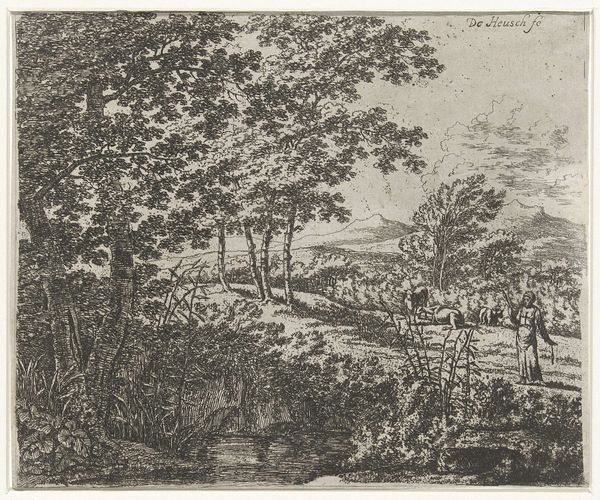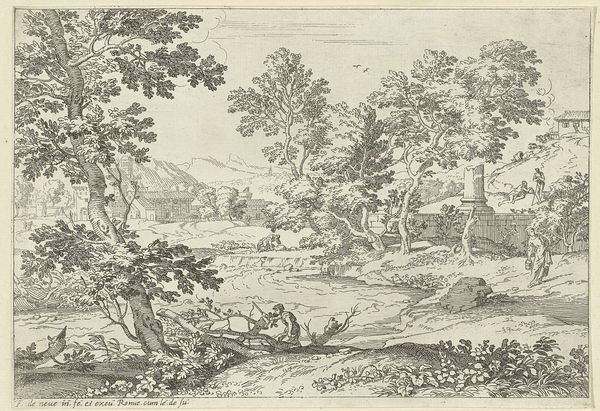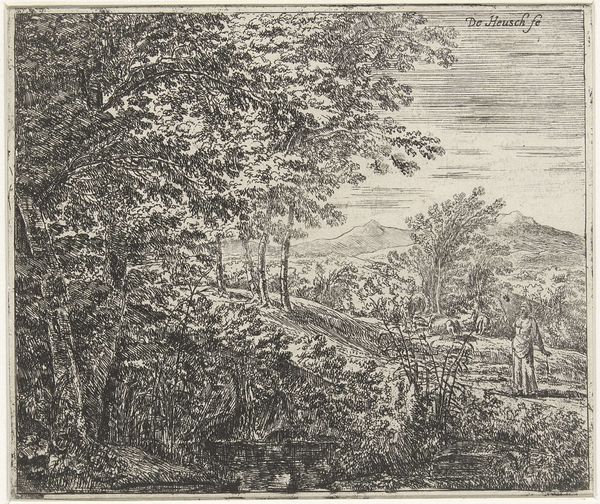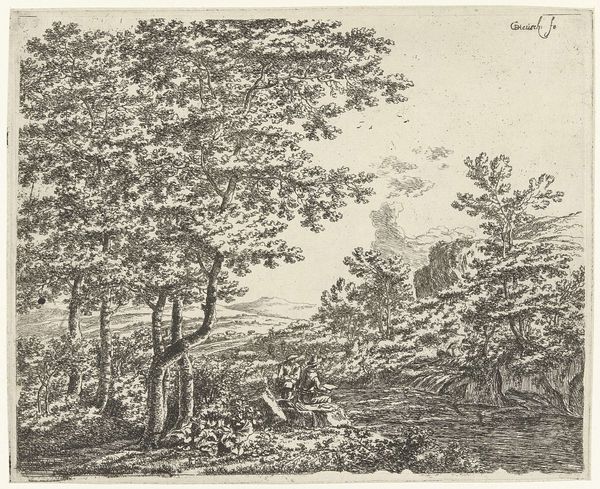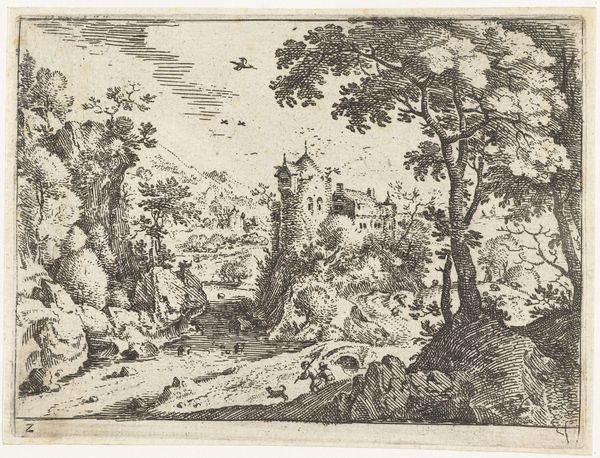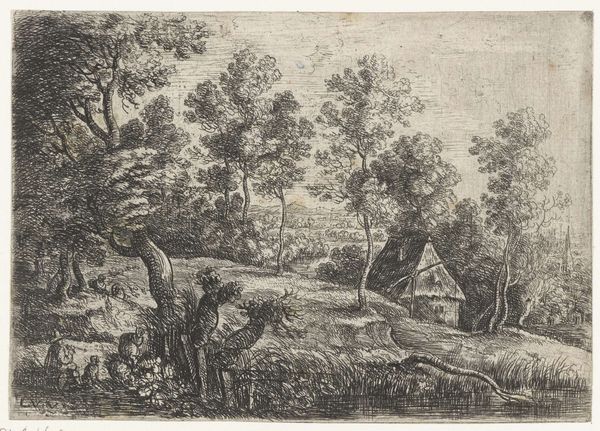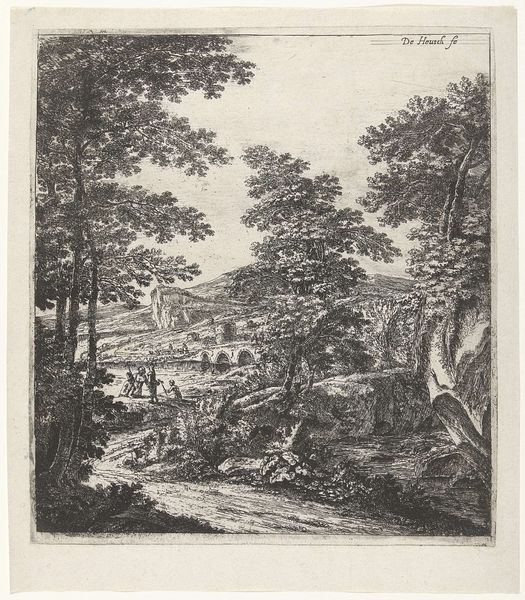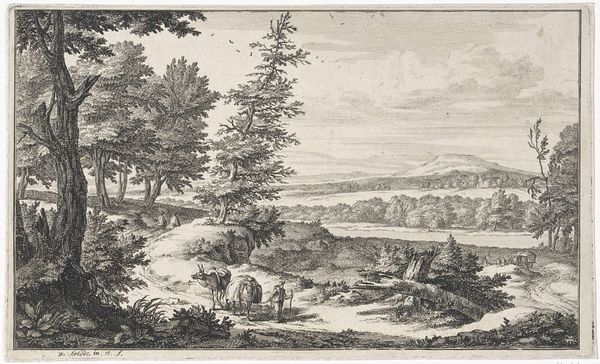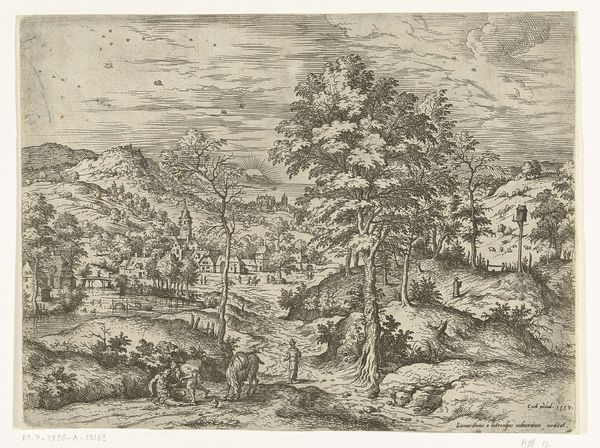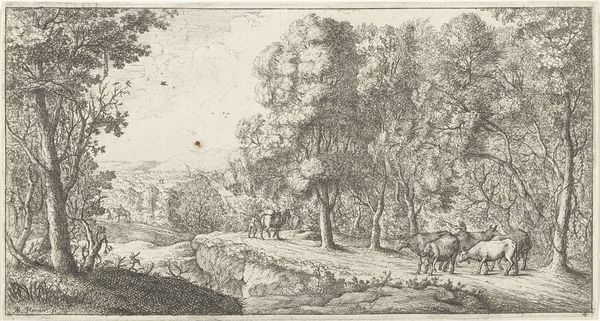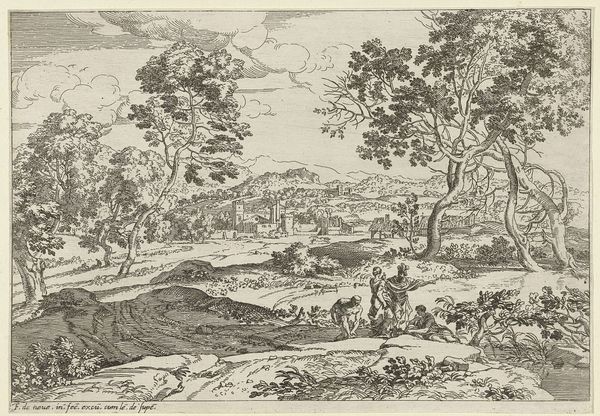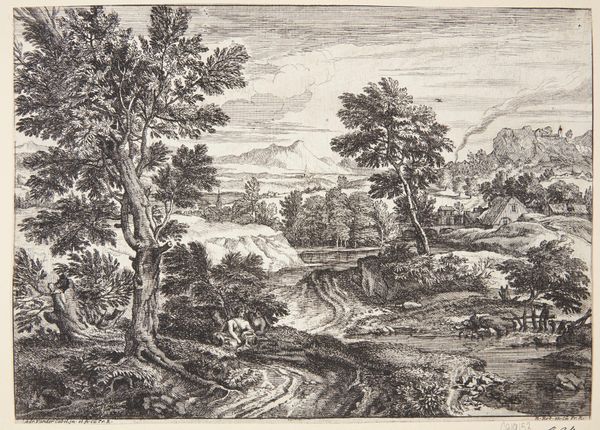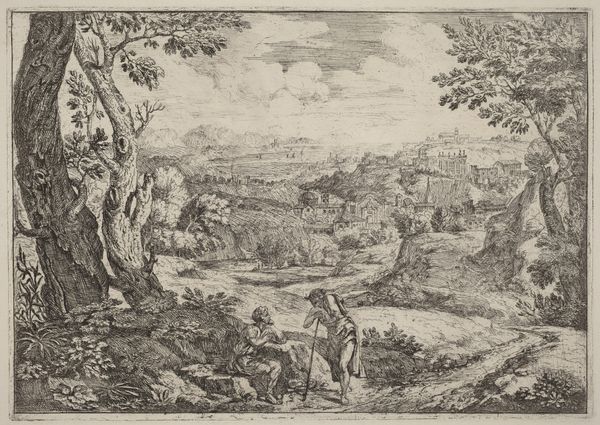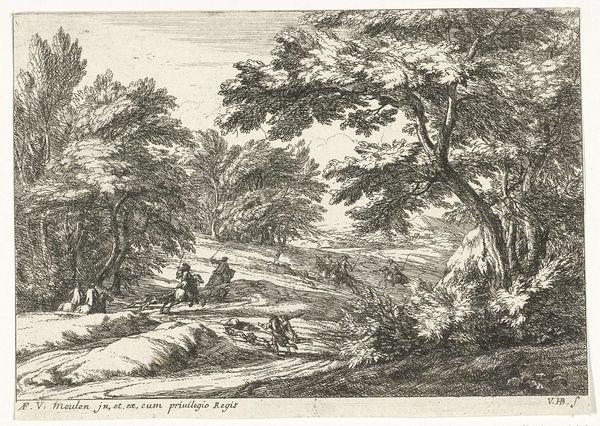
drawing, paper, ink
#
landscape illustration sketch
#
drawing
#
ink drawing
#
baroque
#
pen drawing
#
dutch-golden-age
#
mechanical pen drawing
#
pen illustration
#
pen sketch
#
pencil sketch
#
landscape
#
paper
#
ink
#
ink drawing experimentation
#
pen-ink sketch
#
pen work
Dimensions: height 187 mm, width 235 mm
Copyright: Rijks Museum: Open Domain
Curator: What strikes me first about this piece is its palpable stillness, an almost reverent quietude held within the landscape itself. The pen strokes, delicate as they are, build a world of deep contemplation. Editor: And that world is brought to us by Willem de Heusch in his work, "Landschap met een muilezeldrijver," created around 1690. It's a beautiful example of Dutch Golden Age landscape drawing rendered in ink on paper. Curator: Landscape in art at this moment often reflected ideas of possession, of dominating the natural world, but here, I sense a different power dynamic. The figures almost blend with the mule; it becomes less about human control and more about existing within a shared ecosystem. Look at the rendering of the trees and their canopies versus the crisp edges used to depict the people. It emphasizes the human imposition on nature and the tension between these spaces. Editor: I notice that the mule almost has a Christ-like resemblance, especially with the two figures near its head, which are subtly reminiscent of Jesus flanked by followers on the road to Calvary. Could this be a symbol of burden-bearing, an allusion to the common man's labor, idealized and perhaps sacralized in this landscape? There's something archetypal about this scene. Curator: Yes, the 'burden' of labor is definitely there, but it goes further. Land ownership and resource control during the Golden Age had a real impact on local and indigenous populations. Seeing them together prompts thinking about the ethical issues surrounding landscape art production during that time. It is not enough just to acknowledge their work and presence. We need to be discussing their role and impact. Editor: Absolutely. The mule stands as a bridge – quite literally and figuratively – connecting the land to human endeavors. I think these kinds of natural images create a feeling of connection between human industry and ecological integrity, with visual symbols playing such a vital role for centuries to come. It also stands in as a powerful representation of hardiness. Curator: It certainly does encourage one to look deeper. This work encapsulates how something seemingly tranquil holds complicated histories and narratives about power, ownership, and shared burdens that remain with us today. Editor: For me, pondering de Heusch's delicate linework inspires new connections between our cultural roots, universal themes, and the enduring human presence in landscapes around the world.
Comments
No comments
Be the first to comment and join the conversation on the ultimate creative platform.
